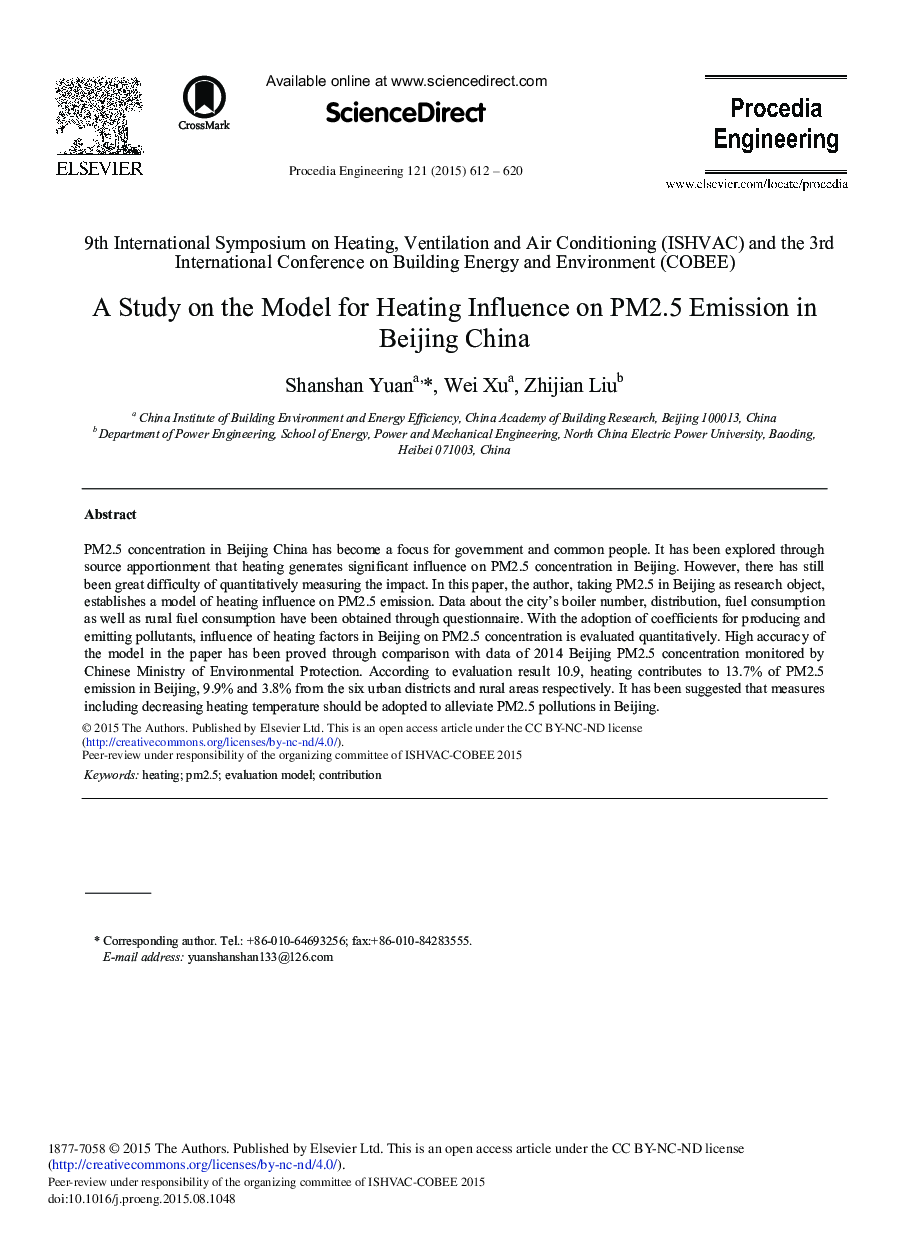| Article ID | Journal | Published Year | Pages | File Type |
|---|---|---|---|---|
| 854932 | Procedia Engineering | 2015 | 9 Pages |
PM2.5 concentration in Beijing China has become a focus for government and common people. It has been explored through source apportionment that heating generates significant influence on PM2.5 concentration in Beijing. However, there has still been great difficulty of quantitatively measuring the impact. In this paper, the author, taking PM2.5 in Beijing as research object, establishes a model of heating influence on PM2.5 emission. Data about the city's boiler number, distribution, fuel consumption as well as rural fuel consumption have been obtained through questionnaire. With the adoption of coefficients for producing and emitting pollutants, influence of heating factors in Beijing on PM2.5 concentration is evaluated quantitatively. High accuracy of the model in the paper has been proved through comparison with data of 2014 Beijing PM2.5 concentration monitored by Chinese Ministry of Environmental Protection. According to evaluation result 10.9, heating contributes to 13.7% of PM2.5 emission in Beijing, 9.9% and 3.8% from the six urban districts and rural areas respectively. It has been suggested that measures including decreasing heating temperature should be adopted to alleviate PM2.5 pollutions in Beijing.
